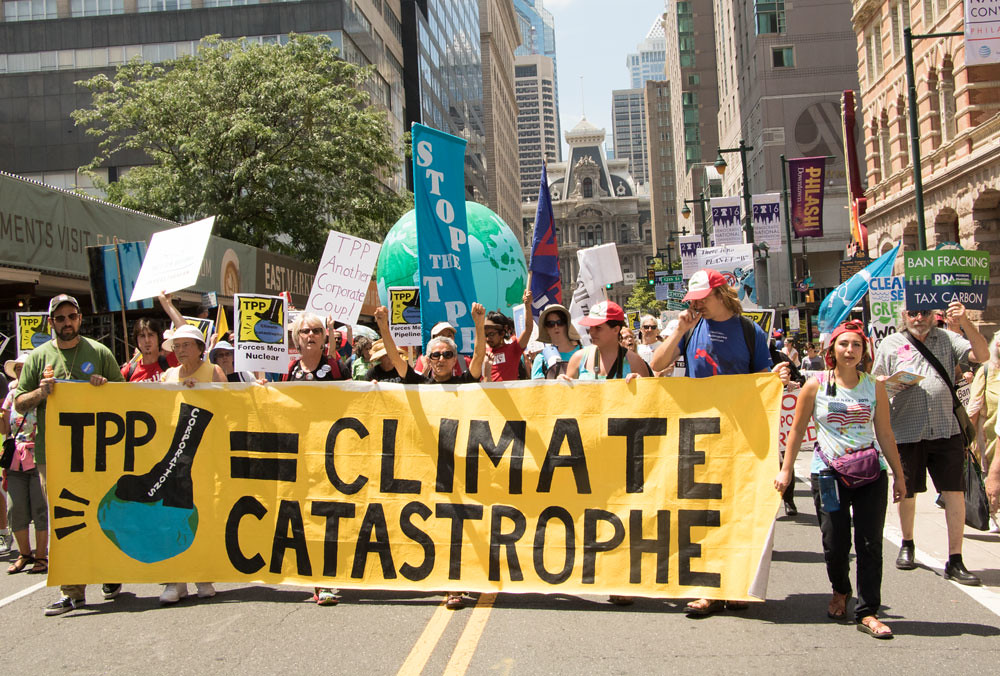Temperatures are rising in Pennsylvania, and there is a risk of extreme weather in the near future. If Pennsylvanians do not take action now, their climate and citizens will face serious consequences.
The term “climate change” describes the long-term changes in the Earth’s weather and temperatures. Over the last 100 years, the world has been experiencing an increase in temperature, which has caused a change in weather patterns. Climate change is largely caused by human activities, such as the increase in fossil fuel usage (coal, oil, and gas) in homes, factories, and transportation vehicles. The effects of climate change are already happening around the world; there has been an increase in extreme weather, rapid melting of glaciers, warmer oceans, and more.
While it may not receive as much attention, Pennsylvania also undergoes the effects of climate change. Over the last 110 years, Pennsylvania has experienced a long-term warming of over 1.8°F. That may sound like a small change, but it is actually way higher than normal. According to Climate.gov, “historically, when measurements of the daily high and low temperatures from many thousands of locations all over the world are averaged together over a whole year, the Earth’s annual average temperature fluctuated by no more than a few tenths of a degree from year to year.”
Pennsylvania has also seen a 10 percent increase in the amount of precipitation, making the climate wetter. The increased downpours have also led to flooding in many areas. For example, In 2011, the Schuylkill River overflowed and flooded a rail line, bike path, and other infrastructure in Philadelphia due to Hurricane Irene. The river then flooded again in 2021 after Hurricane Ida, flooding the Vine Street Expressway, which took several days to reopen.
While the effects of climate change in Pennsylvania may not seem very extreme currently, they are predicted to get much worse. The definition of an “extremely hot” day in Pennsylvania is different based on location. For example, in Philadelphia, an “extremely hot” day could mean 93°F, while Erie may consider 86°F an “extremely hot” day. The number of hot days in Pennsylvania has been increasing, and it is expected that Pennsylvania will experience about 40 extremely hot days in 2050. Over the last century, Pennsylvania’s temperature has increased by 1.8°F, but it is predicted to warm another 5.9°F by 2050. Precipitation is also estimated to increase by another 8% by 2050. Warmer and wetter weather can lead to worsened air quality and an increase in mold and allergy-causing pollen.
These weather conditions can also lead to an increase in invasive and disease-bearing pests such as mosquitos and ticks. Pennsylvania already holds the record for the most Lyme disease cases in the nation, and warmer winters may increase tick populations. These are only a few of the possible consequences that Pennsylvania could face, and the list will only continue if action is not taken.
The effects of climate change may sound scary, but there are many things you can do to reduce its impacts. Some ways you can help are taking public transportation or walking, switching to electric vehicles, reusing and recycling items, throwing away less food, and more. There are so many ways you can help make a difference, even just by trying one of these things.
Pennsylvania is at extreme risk, as is the rest of the world. What will you do to help protect the environment?
































Steve • Feb 5, 2025 at 9:27 AM
Most of the Climate communities’ focus has been on reducing the reliance on fossil fuels, but we hear less about the damage being done to our planet by agro-businesses & food production companies that clear-cut our forests for grazing and farming and then pollute the soil and waterways with pesticides. Humanity needs to stand up against Economic development & remember we are just one species living together with the rest of the bio-diversity here on Earth. Stand up and Be Heard. Protect our Planet. There is no Plan(et) B.